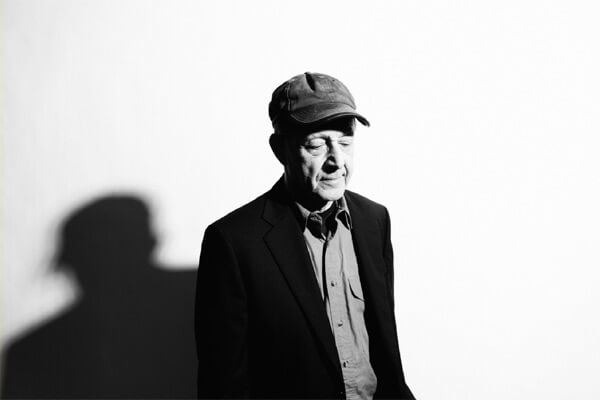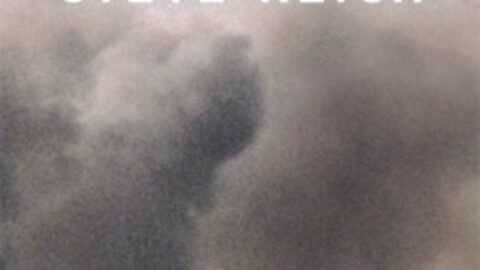 Following a fair amount of controversy regarding scandalous album art, Steve Reich released a new album this past September featuring three works: WTC 9/11, performed by the Kronos Quartet; Mallet Quartet, performed by So Percussion; and Dance Patterns, performed by members of Reich’s longtime ensemble Steve Reich and Musicians.
Following a fair amount of controversy regarding scandalous album art, Steve Reich released a new album this past September featuring three works: WTC 9/11, performed by the Kronos Quartet; Mallet Quartet, performed by So Percussion; and Dance Patterns, performed by members of Reich’s longtime ensemble Steve Reich and Musicians.
WTC 9/11 is Steve Reich’s third string quartet and, like its predecessors, was composed for the Kronos Quartet. Composed in 2010 the piece bears a striking resemblance to Reich’s first quartet Different Trains in that it features the quartet interacting with prerecorded voices, as well as an element that Reich made use of in his second string quartet Triple Quartet, which is writing for one live quartet and two prerecorded. There are three movements: I. 9/11, II. 2010, III. WTC. It commemorates the 10-year anniversary of the September 11 attacks on New York City, Virginia, and Pennsylvania.

The prerecorded voices were compiled from recordings from NORAD (North American Aerospace Defense Command), New York City Fire Department, and a series of interviews of his friends and neighbors that Reich conducted in 2010. The NORAD and FDNY recordings very chillingly capture much of the confusion and horror on the day of the attacks through the very intense radio calls made at different moments during the day. The interviews, while no less detailed, provide reflection on the events from 9 years away. Bang On A Can’s David Lang makes a guest appearance in these interviews. These voices have been manipulated to elongate the final vowels or consonants of the speakers’ phrases to provide and eerie timbre that Reich uses harmonically. The combination of both the electronically manipulated speech and the content of the speech itself by and large add the most weight to the work.
As with Different Trains, the strings play off of the various melodic and rhythmic patterns that are provided by the spoken text. The difference in WTC 9/11 is that the strings, rather than acting in conjunction with the prerecorded speech or even using the speech as a departure point, act as more of a supportive role with the speech as a focal point. The resulting product is presented as more of a prerecorded-tape-with-string-quartet-accompaniment piece than the converse. The speech is griping and powerful, nonetheless. The moment where the ensemble and tape seamlessly merge as one unit occurs in the third movement, which is titled after David Lang’s mention that “WTC” has a double meaning of also being “world to come.” In this movement, Jewish residents are heard signing and reciting Psalms as part of the Jewish practice of Shmira, which is the protecting of the bodies and souls of recently deceased by reciting Biblical passages. This strikingly meditative moment in the movement presents some of Reich’s most gorgeous writing to date.
At 15 minutes in length, WTC 9/11 feels as though one is hearing only bits and pieces of a harrowing experience from a man who obviously has much more to say than is being told. Reich admits in the liner notes that despite attempts at creating a larger and more expansive work, the materials felt as though they “wanted to be terse.” Indeed, the materials move along in a hurried, almost rushed pace that shift rather abruptly between harmonies, sections, and movements. Even the pacing of the prerecorded voices feels a bit compressed, especially during the second movement. Yet, there is an intensely dramatic arc that pushes through the quartet that gives a sense of completion and finality, while at the the same time concluding with an open ended question of what is nature of the “world to come?” The Kronos Quartet delivers a commanding and powerful performance of a piece that could very easily fall victim to a more subversive treatment of the ensemble’s role.
 With an album whose cover is dedicated entirely to WTC 9/11, with a focal point as dense and heavy as September 11th, it is very easy to over look the remaining two pieces that make up the release. Reich’s Mallet Quartet and Dance Patterns present Reich’s more familiar and playful approach to instrumental writing. Mallet Quartet, composed in 2009, adheres to the three-movement, “fast-slow-fast” form that has become a staple of much of Reich’s works. The quartet is scored for two vibraphones and two five-octave marimbas, and is performed with the precision and confidence that defines the playing of So Percussion. The deeply resonating, pulsating marimba of the first movement acts as a finely woven tapestry on which the vibraphone dances about rhythmically, melodically, and harmonically. This gives way to a much more exposed second movement, where the marimba only lightly colors the more static vibraphone, before returning in the third movement to the highly rhythmic character of the first.
With an album whose cover is dedicated entirely to WTC 9/11, with a focal point as dense and heavy as September 11th, it is very easy to over look the remaining two pieces that make up the release. Reich’s Mallet Quartet and Dance Patterns present Reich’s more familiar and playful approach to instrumental writing. Mallet Quartet, composed in 2009, adheres to the three-movement, “fast-slow-fast” form that has become a staple of much of Reich’s works. The quartet is scored for two vibraphones and two five-octave marimbas, and is performed with the precision and confidence that defines the playing of So Percussion. The deeply resonating, pulsating marimba of the first movement acts as a finely woven tapestry on which the vibraphone dances about rhythmically, melodically, and harmonically. This gives way to a much more exposed second movement, where the marimba only lightly colors the more static vibraphone, before returning in the third movement to the highly rhythmic character of the first.
Composed in 2002 for a film by Thierry de Mey and choreographer Anne Teresa de Keersmaeker, Dance Patterns offers up in 6 minutes a perfect sampling of Reich’s sound world of recent years, even hinting at the familiar three-part form. Members of Steve Reich and Musicians give a spirited and energetic performance that at times seems to teeter between finely tuned and rhythmically unstable.
In what appears to be an attempt to remove some of the weight given to WTC 9/11, this disc release comes with a DVD consisting only of a performance by So Percussion of Mallet Quartet. The video, shot by Mark Wessels, captures the intimate nature of Reich’s music as the ensemble plays the piece from memory in close quarters resembling the same type of rehearsal space usually reserved for a neighborhood garage band, complete with mood lighting. While the package suggests that the main attraction is WTC 9/11, Mallet Quartet is more than capable of standing on its own as a well-crafted Steve Reich work that deserves careful attention as well, and Dance Patterns is a charmingly concise piece, perfect for the Reich fan on the go.
Steve Reich WTC 9/11, Mallet Quartet, Dance Patterns (Nonesuch 528236-2) – Buy on Amazon
—
George Heathco is a composer, electric guitarist, collaborator, and teacher that lives in Houston, Tx with his wife and daughter. You can follow him on twitter:@GeorgeHeathco
























